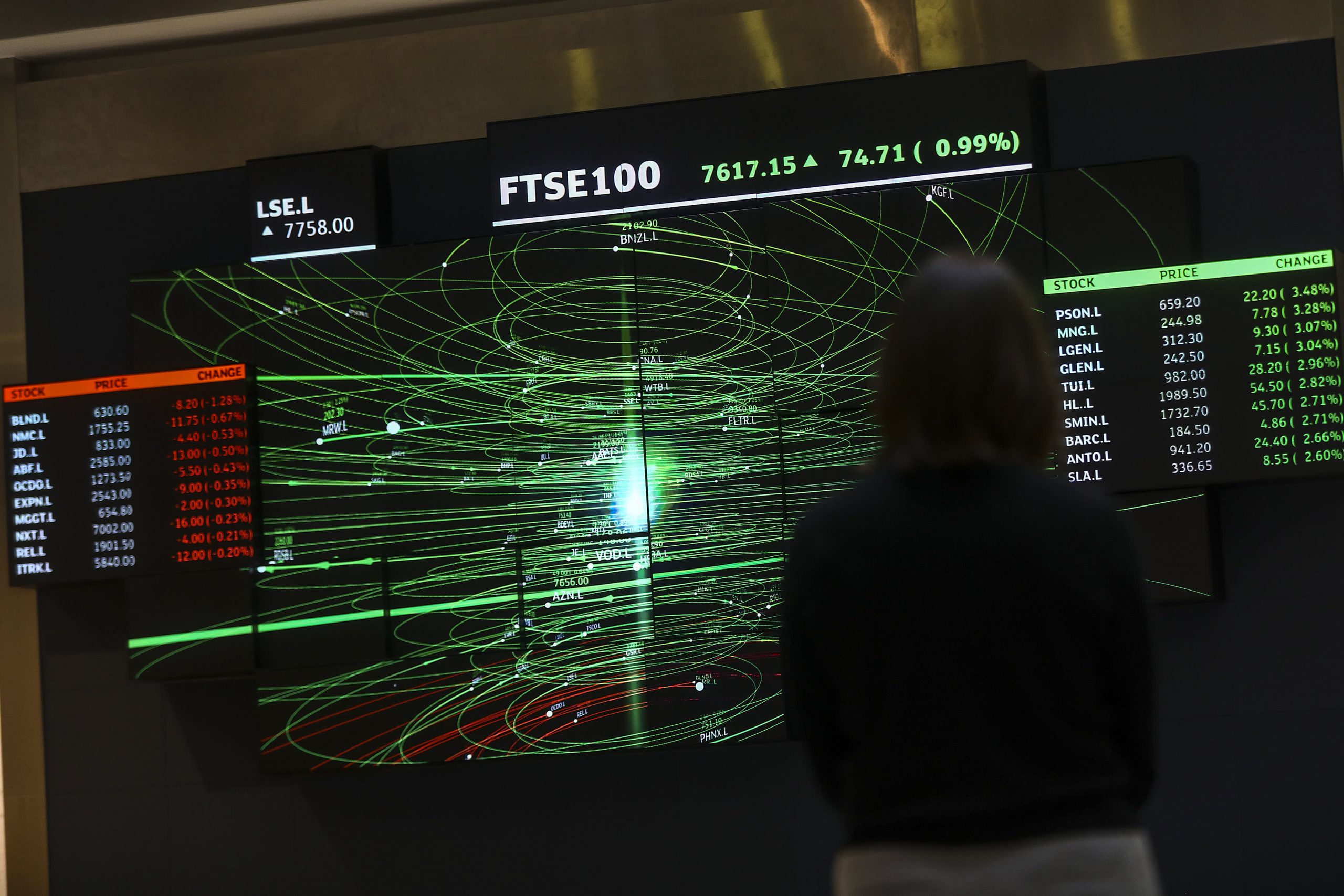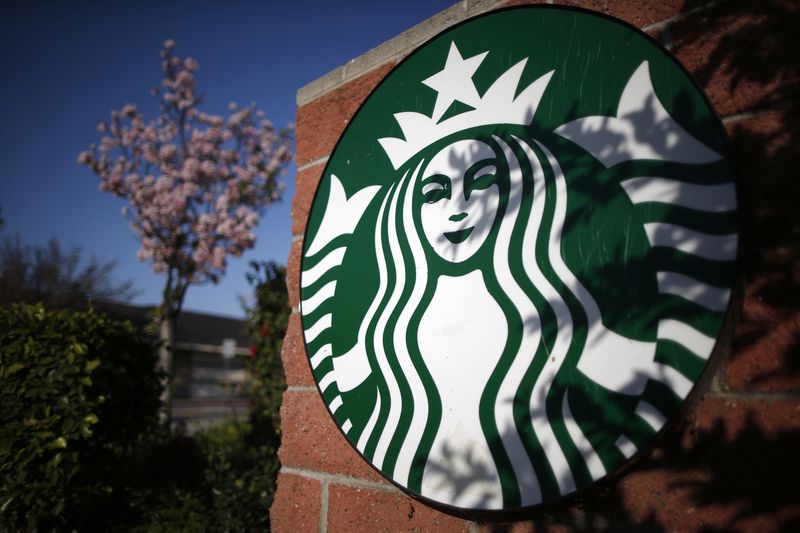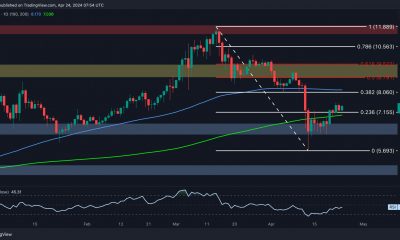Stock Markets
Biggest European stock markets ended down for the second consecutive session

European stock markets declined for the second trading session in a row. The main stock indices of Western Europe declined for the second consecutive session of trading yesterday. The composite index of the largest companies in the region, Stoxx Europe 600 by market close fell by 0.64% to 396.35 points.
Biggest European stock markets — what’s going on?
British stock index FTSE 100 was down 0.78%. German DAX was down 0.37% and French CAC 40 was down 0.82%. Spain’s IBEX 35 and Italy’s FTSE MIB fell 0.91% and 1%, respectively.
Investors are concerned about the impact of high oil prices on the dynamics of inflation and the global economy after OPEC+ decision to reduce oil production quotas in November by 2 million b / s, writes Trading Economics.
Traders on Thursday, including analyzing the minutes of the September meeting of the European Central Bank (ECB), which showed that its leaders are concerned about rising inflation and promised to continue to raise rates, even if economic growth is threatened.
German industrial orders fell 2.4 percent in August from the previous month, the German Economy Ministry said.
Analysts on average had expected a decline of 0.7%, Trading Economics data showed. In July, revised data showed a 1.9% increase, rather than a 1.1% decline as previously reported.
Earlier, we reported that U.S. stock futures were declining ahead of labor market data.
Stock Markets
Piper Sandler cuts First Bank stock target to $15, maintains Overweight

On Wednesday, Piper Sandler adjusted its stance on First Bank (NASDAQ:), reducing the price target to $15 from the prior $16 while sustaining an Overweight rating on the stock. The adjustment follows First Bank’s first-quarter earnings report for 2024, which showed earnings per share (EPS) of $0.50. When accounting for a Bank-Owned Life Insurance (BOLI) death benefit and normalizing the tax rate, the core EPS was calculated at $0.45. This core figure surpassed both the analyst’s and the consensus estimates by $0.03.
The report highlighted that a negative provision recognized in the quarter was the main variance from the forecast, contributing $0.06 to the EPS. This was somewhat balanced by a $0.01 decrease in net interest income (NII) and a $0.01 rise in operating expenses. Consequently, pre-provision net revenue (PPNR) fell short of expectations by $0.02.
The bank’s financial results for the first quarter of 2024 included an unexpected benefit from the BOLI death benefit, which influenced the reported earnings. However, when this one-time factor was excluded, the core earnings still outperformed the anticipated results. The negative provision taken was not anticipated in the initial models and served as the key difference from the projections.
Piper Sandler’s revised price target reflects the latest financial figures and the bank’s performance in the quarter. Despite the adjustments made in the financial modeling, the firm continues to hold a positive view on First Bank’s stock, as indicated by the Overweight rating.
The new price target of $15 indicates Piper Sandler’s valuation expectation for First Bank’s shares following the recent earnings report and the bank’s current financial position. The Overweight rating suggests that the firm expects the stock to outperform the average return of the stocks covered in the sector over the next 12 to 18 months.
remove ads
.
InvestingPro Insights
In the wake of Piper Sandler’s price target adjustment for First Bank (NASDAQ:FRBA), InvestingPro data and insights offer additional context for investors considering the bank’s stock. With a market capitalization of $309.23 million and a P/E ratio that has adjusted to a more attractive 11.48 based on the last twelve months as of Q4 2023, First Bank appears to be positioned for potential growth. The bank also boasts a solid operating income margin of 39.08%, reflecting efficient management and profitability.
InvestingPro Tips suggest a positive outlook, noting that net income is expected to grow this year, with analysts predicting profitability. This is further supported by three analysts revising their earnings upwards for the upcoming period, which may signal confidence in the bank’s financial trajectory. Additionally, the bank has been profitable over the last twelve months, reinforcing the positive sentiment.
For investors seeking more in-depth analysis, there are additional InvestingPro Tips available, which can be explored further at https://www.investing.com/pro/FRBA. To enhance your investing strategy with these expert insights, use the coupon code PRONEWS24 to get an additional 10% off a yearly or biyearly Pro and Pro+ subscription.
This article was generated with the support of AI and reviewed by an editor. For more information see our T&C.
Stock Markets
Why Is HashiCorp (HCP) Stock Soaring Today

What Happened:
Shares of cloud infrastructure automation platform HashiCorp (NASDAQ:) jumped 10% in the afternoon session after Bloomberg reported that tech giant IBM (NYSE:) is closing a deal to acquire the company for about $35 per share. According to sources, a deal could be struck between IBM and HashiCorp as soon as Wednesday, April 24, 2024. This corroborated the report on Tuesday, April 23, 20224, as HCP’s stock rallied 20%, after the Wall Street Journal reported on a potential deal with IBM.
In a related event, BTIG analyst downgraded HashiCorp from Buy to Neutral, adding, “Given that there is still some uncertainty on a deal being consummated and a typical approval/closing process in the six to nine-month range, BTIG sees limited incremental upside to shares near term.”
Is now the time to buy HashiCorp? Find out by reading the original article on StockStory, it’s free.
What is the market telling us:
HashiCorp’s shares are very volatile and over the last year have had 19 moves greater than 5%. In context of that, today’s move is indicating the market considers this news meaningful but not something that would fundamentally change its perception of the business.
The biggest move we wrote about over the last year was 11 months ago, when the stock dropped 25.6% on the news that the company reported first quarter results that beat analysts’ revenue, remaining performance obligations (RPO, a leading indicator of revenue), and earnings per share (EPS) estimates. Cash position improved with operating cash flow at nearly breakeven. However guidance was weak and a major driver of the stock move. Revenue guidance for the next quarter missed Consensus. The full-year guidance was lowered, which is never a good sign and could imply company-specific challenges or lack of visibility around near-term fundamentals. Non-GAAP operating loss guidance was roughly inline. Management highlighted a weaker macro environment and ” pressure in the buying process.” HashiCorp also announced cost-saving measures and a headcount reduction of about 8%. Overall, it was a fine quarter for the company but underwhelming guidance was the focus.
remove ads
.
HashiCorp is up 38.6% since the beginning of the year, but at $31.70 per share it is still trading 10.7% below its 52-week high of $35.49 from June 2023. Investors who bought $1,000 worth of HashiCorp’s shares at the IPO in December 2021 would now be looking at an investment worth $371.87.
Stock Markets
Starbucks loses appeal over union election at Seattle store

By Daniel Wiessner
(Reuters) – A U.S. appeals court on Wednesday rejected Starbucks (NASDAQ:)’ claims that an election won by a union at the coffee company’s flagship Seattle store was invalid because it was held via mail ballot during the COVID-19 pandemic.
A three-judge 9th U.S. Circuit Court of Appeals panel upheld a National Labor Relations Board decision that said the company, which is facing a nationwide union organizing campaign, must recognize and bargain with the store’s union, which represents nearly 100 workers.
Starbucks claimed that a labor board official who ordered the mail-ballot election in March 2022 used the wrong data to determine that an in-person election was unsafe because there was an upward trend in COVID cases in the Seattle area at the time. Workers at the store voted 38-27 to unionize.
The 9th Circuit on Wednesday disagreed, finding that the official correctly applied a test the board adopted in 2020 for determining when a mail-ballot election was appropriate because of the pandemic.
Starbucks and Workers United, the union organizing the company’s stores, did not immediately respond to requests for comment.
During the pandemic, most union elections were held via mail ballot, and the labor board is still ordering elections by mail in some cases.
Business groups and Republican lawmakers have criticized the labor board for continuing to shun in-person elections even as the pandemic subsided. They claim mail-ballot elections lower voter participation and jeopardize workers’ rights to choose whether to be represented by a union.
remove ads
.
In a 2020 decision involving hospital operator Aspirus, the labor board said that, among other factors, regional directors should look at the 14-day trend in local COVID cases in deciding how to administer a union election.
In Wednesday’s case, Starbucks claimed that meant looking at the average rate of new cases each day over a 14-day period, and not the number of cases reported 14 days apart as the regional director had done.
But the 9th Circuit in its decision noted that the labor board had not defined what a 14-day trend was or laid out a specific method for calculating it.
“Even if we credit Starbucks’s approach … our standard of review does not permit us to displace the NLRB’s choice between two fairly conflicting views,” Circuit Judge M. Margaret McKeown wrote for the court.
Workers at more than 420 of Starbucks’ 9,000 U.S. stores have voted to unionize since 2021. The 9th Circuit case is one of several involving the organizing campaign to reach federal appeals courts.

 Forex2 years ago
Forex2 years agoForex Today: the dollar is gaining strength amid gloomy sentiment at the start of the Fed’s week

 Forex2 years ago
Forex2 years agoHow is the Australian dollar doing today?

 Forex1 year ago
Forex1 year agoUnbiased review of Pocket Option broker

 Forex2 years ago
Forex2 years agoDollar to pound sterling exchange rate today: Pound plummeted to its lowest since 1985

 Cryptocurrency2 years ago
Cryptocurrency2 years agoWhat happened in the crypto market – current events today

 World2 years ago
World2 years agoWhy are modern video games an art form?

 Stock Markets2 years ago
Stock Markets2 years agoMorgan Stanley: bear market rally to continue

 Economy2 years ago
Economy2 years agoCrude oil tankers double in price due to EU anti-Russian sanctions
































